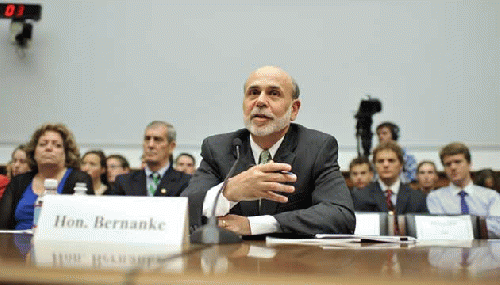There is considerable ambiguity over whether the Federal Reserve is a government agency, a private institution, or something in between. The Fed itself says:
This still leaves quite a bit of ambiguity.
The Federal Reserve System fulfills its public mission as an independent entity within government. It is not "owned" by anyone and is not a private, profit-making institution.
As the nation's central bank, the Federal Reserve derives its authority from the Congress of the United States. It is considered an independent central bank because its monetary policy decisions do not have to be approved by the President or anyone else in the executive or legislative branches of government, it does not receive funding appropriated by the Congress, and the terms of the members of the Board of Governors span multiple presidential and congressional terms.
However, the Federal Reserve is subject to oversight by the Congress, which often reviews the Federal Reserve's activities and can alter its responsibilities by statute. Therefore, the Federal Reserve can be more accurately described as "independent within the government" rather than "independent of government."
1. The U.S. has to borrow its money and pay interest on it (plus pay broker-dealer middlemen a substantial fee in between). We don't have to do that with true government money like coins and U.S. Notes (until 1996 when they were phased out). True, the interest is small right now, but it hasn't always been so, and we are reliant on the Fed keeping a near Zero Interest Rate Policy (ZIRP), when the Constitution's coinage clause gave us the ability to produce paper money, debt-free(Article 1, Section 8, Clause 5).
2. Only 18% of Treasuries in value are held by the Federal Reserve. The rest are either sold by the Fed itself to other parties, often foreign, or directly by Treasury at auction. There is no need to do either of these things in a truly sovereign money system.
3. Coins and U.S. Notes produce immediate seigniorage for the government account. Federal Reserve Notes don't and are a cost.
4. The banks get to elect some (7) of the Federal Reserve Bank (FRB) directors. They also have strong backdoor influence over the rest. It is hard to imagine a FRB Chair appointed whom the banks and Wall Street did not want. In fact, current chair Janet Yellen was chosen over more hawkish FRB Governors because of their preference, though the public spin is that people didn't want controversial Larry Summers instead.
5. Monetary Reformer and founder of the American Monetary Institute, Stephen Zarlenga, in his article on the Federal Reserve, says
The Federal Reserve System puts itself forward as a non-profit organization that turns over its operating profits to the U.S. Treasury, after all expenses, including the 6% dividend to member banks. However this misses the point on several scores. First, the banking profits coming through the privileged money creation process mainly occurs at the member bank level of operation, and those profits are not turned over to the Treasury." - Click Here
6% a year is about average for the stock market or a little less, but of course this 6% comes with much less risk. In any case, this is money NOT going to the public. Zarlenga also points out that the money the Fed pays itself is quite high (they are highly paid bankers, after all), though this has not been audited.
6. The Fed bailed out the banks to the tune of $16 Trillion (Bernie Sanders and the GAO) - $29 Trillion (Economist L. Randall Wray) ...and counting, in a series of revolving loans, many of which went to European banks ($12T says Sanders). (One of the reasons progressives like Krugman oppose further audits is that those calling for audits, like the Congressional Paul father and son, are gold bugs looking to establish hard money. Modern progressive economists know this would be a deflationary disaster and rightly oppose gilding the Fed for that reason). Clearly, that is an entity acting independently. What they did NOT do is suggest Sovereign Debt-Free money: OpEdNews Article: Fantasy Fed Speech
It will be clear from the following points that the Fed is definitely not part of the US Government:
* The Fed is not organized within the Executive, Legislative or Judicial branches of our government.
* Who pays the Fed's bills and determines its budget? Not any part of our government. The Fed gets its funding from its own specially privileged operations. The Fed Board determines Fed budgets.
* Who monitors and oversees Fed activities? Again the Fed itself. While some important elements of proper auditing have taken place, there has not yet been a comprehensive independent audit, by the Government Accountability Office as proposed in a recent letter from Ralph Nader to new Fed Chairman Ben Bernanke, calling for greater monetary transparency.
(Note: You can view every article as one long page if you sign up as an Advocate Member, or higher).







